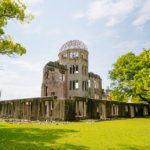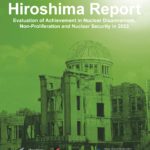I The Government’s War Damage Reconstruction Plans
1 Japan’s Urban Planning System Until the End of WWII
(1) Roles of the Ministry of Home Affairs, the Tokyo City Area Improvement Ordinance, and the enactment of the City Planning Act
In order to explain the postwar reconstruction system in Japan, we must first examine the urban planning system that had been in place up until the end of WWII. Along with the development of the Cabinet system and the opening of the Parliament in 1887, as part of Japan’s modernization process, in 1888 the Tokyo City Area Improvement Ordinance (Tokyo Shi-ku Kaisei Jorei) spearheaded Japan’s urban planning systems. 1) This system implemented in Tokyo was gradually applied to other major cities. In this process, the Ministry of Home Affairs (Naimu Sho) was placed in charge of organizing city planning.
In the Taisho period (1912-1926), the population of Japan became significantly concentrated in big cities as Japanese industry was further modernized. Various measures had to be put in place in order to address the emerging issues, such as confusion over land use. As disorderly developments along the outskirts of cities would require tremendous expenses for redevelopment, the City Planning Act (Toshi-keikaku Ho) was enacted in 1919 to develop cities based on city planning by defining future visions of those cities. The City Planning Act gradually expanded to be applied to many cities across the country. Under this system, the designation of city planning areas, the planning, and the years for the construction of urban roads, parks and green areas were decided and implemented, and building regulations were actively put into place in conjunction with land-use zoning and the existing Urban Building Act.
(2) The Situation in Hiroshima
The City Planning Act took effect in the City of Hiroshima in 1923, and in 1925 the City established the “city planning area (toshi-keikaku chiiki)” to which the Act was applied. Land-use zoning was settled in 1927, road planning in 1928, and park planning in 1941.
As part of this process, the City Planning Commission (Toshi-keikaku Iinkai) of Hiroshima Prefecture met for the first time on March 28, 1924; starting before the war and continuing until the end of war, the Commission met 38 times (the date of the final meeting is unknown). The City Planning Division of Hiroshima Prefecture was in charge of organizing the commission (today’s City Planning Council). The minutes include the agenda of the meetings, explanatory materials and the lists of the members. Shorthand records of the deliberations are also attached.
2 Institutional Reform for Implementing the War Damage Reconstruction Plan
(1) Establishment of the War Damage Reconstruction Agency2)
On August 15 in 1945, World War II and the so-called Pacific War came to an end. There were many cities destroyed during the war, and postwar reconstruction became a major issue. The reconstruction plan was left in the hands of the War Damage Reconstruction Agency (Sensai Fukko-in), which was established in November 1945. City planning was administered in a complex way for some time, as the cities that had not suffered from war damages were under the jurisdiction of the Ministry of Home Affairs; and the War Damage Reconstruction Agency was in charge of the reconstruction of the cities which were destroyed in the war.
The quick establishment of the War Damage Reconstruction Agency after the end of the war in August 1945 indicates that postwar reconstruction was already being prepared for before the end of the war. With regard to the establishment of the War Damage Reconstruction Agency, Makoto Inoue’s book, Shodo kara no Saisei: Sensai Fukko wa Ikani Nashieta ka (The Recovery from the Scorched Earth: How the War-damage Reconstruction was Accomplished) (Shinchosha, 2012), introduces a testimony of Takeo Ohashi, who said that the establishment of the Agency was already being prepared for during wartime by some in the Ministry of Home Affairs, in strict confidence.
Many of those working for the War Damage Reconstruction Agency were those transferred from the Ministry of Home Affairs, and the civilian Ichizo Kobayashi was invited as Commissioner for its start. In 1948, the Ministry of Home Affairs was dissolved, and the War Damage Reconstruction Agency and the National Land Bureau of the former Ministry of Home Affairs were merged into the newly-established Construction Agency (Kensetsu-in) in 1949.
On December 30, 1945, the Cabinet adopted the “Basic Policy for the Reconstruction of War-damaged Areas (Sensai-chi Fukko Keikaku Kihon Hoshin).”3) This was precisely the main policy of the country’s war-damage reconstruction plan. Some notable points from this plan include the roles of the street networks (item “i” under “Roads” in the section titled “Major Infrastructure”); the relationship between the sizes of the cities and the width of the streets (item “ro” of the same section); and item “ha” which states, “In required areas, 50 to 100 meter-wide roads or open spaces should be created for disaster prevention as well as for beautification of the cities.” The Basic Policy did not require cities to include 100-meter wide roads in their reconstruction plans but gave guidelines and recommendations for building such streets.
On January 14, 1946, this policy was reported at the meeting where division chiefs in charge of reconstruction from the relevant prefectures as well as the heads of relevant departments and sections from five major cities gathered, and based on this policy, reconstruction plans were made by local governments throughout the country.
(2) Land Readjustment Methods and Systems
Among the Japanese city planning systems, the system of “land readjustment (kukaku seiri)” is the most difficult to understand. This system was originally developed in Switzerland and German (in Germany, it is called Lex Adickes). It was introduced to Japan by the Ministry of Agriculture and Commerce, and was enacted in 1899 as the Arable Land Readjustment Act (Kochi Seiri Ho). In order for this system to be applied to urban development, the Arable Land Readjustment Act was amended in 1909 and later incorporated into the City Planning Act (old law). Before the Land Readjustment Act was enacted in 1954, ad hoc city planning acts were used to clarify the methods of reconstruction projects. One was made to facilitate the readjustment of land for disaster reconstruction after the Great Kanto Earthquake, and another for the postwar reconstruction after WWII.
The basic land readjustment system is explained in the Land Readjustment Act as “projects related to the changes of land lot form as well as the establishment of or changes to public facilities in order to develop and improve them and to promote the use of residential land within planned city areas.” In other words, landowners were asked to provide their land for public use, and projects were conducted to enhance the convenience of the residential land as a whole. Land reduction due to provision for a land readjustment project is called “genbu,” and the ratio of land reduction due to this provision is called “genburitsu.” Specifically, land reduction due to provision for public facilities which are to be developed under a land readjustment project is called “kokyo-genbu,” while it is called “horyuchi-genbu” when the land contributed is reserved and later sold to supplement project expenses.
(3) Creation and Use of War-damage Maps
War-damage maps were created immediately after WW in Japan. Some cities created such maps on their own. The maps of major war-damaged cities in Japan were also collected and then published. For instance, the First Demobilization Ministry (Dai Ichi Fukuin Sho) collected and published war-damage maps from over 150 cities, towns and villages around the country in December 1945 in Nihon Toshi Sensai Chizu (Maps of War Damage in Japanese Cities). The original document archived at the National Diet Library of Japan was later reprinted and published as Nihon Toshi Sensai Chizu (Maps of War Damage in Japanese Cities) (Hara Shobo, 1983).
World War II left serious damages on a global scale, and many cities were destroyed in the war. However, in some cities in the world, there is no information left to inform us if any war-damage maps were created or not; or in other cases, even though such maps were created they were kept confidential. These maps were rarely published or distributed widely. Under such circumstances, it is noteworthy that in Japan, war-damage maps were actually made and published.
Notes and References
1. Taikakai Naimushoshi Henshu Iinkai (Ed.). Naimushoshi: Dai Ni Kan (History of the Ministry of Home Affairs, Vol. II). Taikakai,1971.
Ishida, Yorifusa. Nihon Kindai Toshi Keikaku no Hyakunen (100 Years of Modern Urban Planning in Japan). Gendai Jichi Sensho, 1987.
Ishida, Yorifusa. Nihon Kindai Toshi Keikakushi Kenkyu (Historical Research of Modern Urban Planning in Japan). Kashiwa Shobo, 1992.
2. Ministry of Construction (Ed.). Sensai Fukkoshi: Dai Ikkan, Dai Ni Kan, Dai San Kan (Record of War Damage Reconstruction, Vol. 1, Vol. 2 and Vol. 3). Toshi Keikaku Kyokai, 1959. Details of the foundation of the War Damage Recovery Agency.
3. Ministry of Construction (Ed.). Sensai Fukkoshi: Dai Ikkan, Dai Ni Kan, Dai San Kan (Record of War Damage Reconstruction, Vol. 1, Vol. 2 and Vol. 3). Toshi Keikaku Kyokai, 1959.






